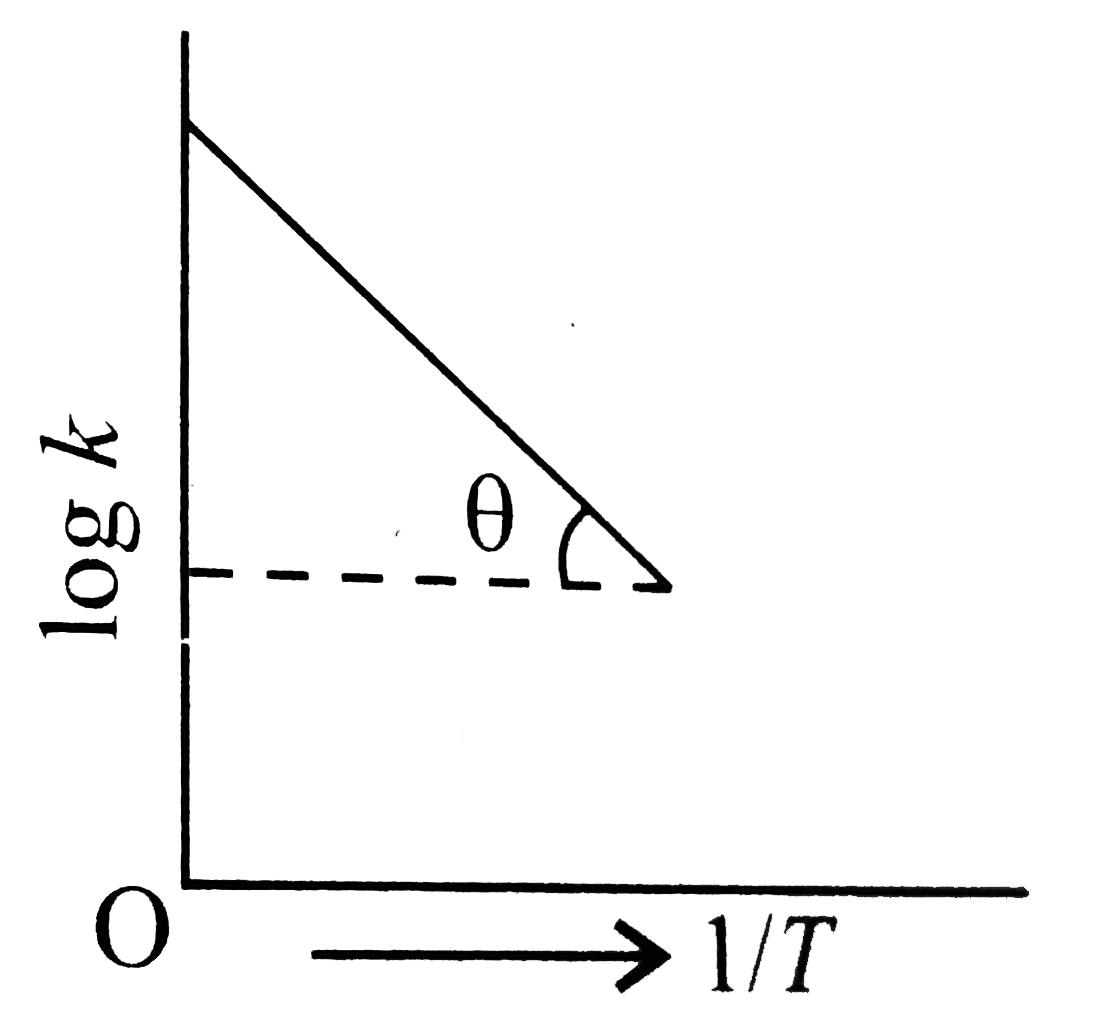Complete Solutions to EXERCISE 2 : CONCEPT APPLICATOR of chapter CHEMICAL KINETICS of Class 12 book with complete answers and questions
| Class 12 | CHEMISTRY |
| Chapter | CHEMICAL KINETICS |
| DISHA PUBLICATION | EXERCISE 2 : CONCEPT APPLICATOR |
| Number Of Questions | 30 |
| Academic Year | 2023-24 |
For the reaction `R-X+OH^(-) to ROH+X^(-)`, the rate is given as :
`"Rate"=5.0 xx 10^(-5)[R-X][OH^(-)] +0.20 xx 10^(-5)[R-X]`.
What percentage of R-X react by `S_(N)2` mechanism when `[OH^(-)]= 1.0 xx 10^(-2) M`?
View SolutionConsider the reaction,
`Cl_(2)(aq) + H_(2)S(aq) rarr S(s) + 2H^(+) (aq) + 2Cl^(-)(aq)`
The rate equation for this reaction is,
Rate `=k [Cl_(2)][H_(2)S]`
Which of these mechanisms is`//`are consistent with this rate equation ?
(I) `Cl_(2) + H_(2)S rarr H^(+) + Cl^(-) + Cl^(+) + HS^(-)` (slow)
`Cl^(+) + HS^(-) rarr H^(+) + Cl^(-) + S` (fast)
(II) `H_(2)S hArr H^(+) +HS^(-)` (fast equilibrium)
`Cl^(+) + HS^(-) rarr 2 Cl^(-) + H^(+) + S` (slow)
View SolutionIn a reversible reaction `2NO_(2)underset(k_(2))overset(k_(1))iffN_(2)O_(4)`, the rate of disappearance of `NO_(2)` is equal to
View SolutionFor the reaction `N_(2) + 3H_(2) to 2NH_(3)` if
`(Delta[NH_(3)])/(Deltat) = 2 xx 10^(-4) mol L^(-1)s^(-1)`, the value of `(-Delta[H_(2)])/(Deltat)` would be
View SolutionThe mechanism of the reaction
`2NO + O_(2) rarr 2NO_(2)` is
`NO + NO underset(k_(-1))overset(k_(1))hArr N_(2)O_(2) ("fast")`
`N_(2)O_(2) + O_(2) overset(k_(2))rarr 2NO_(2) (slow)`
The rate constant of the reaction is
View SolutionFor a reaction initial rate is given as : `R_(0)=k[A_(0)]^(2)[B_(0)]`. By what factor, the initial rate of reaction will increase if initial concentration is taken 1.5 times and B is tripled?
View SolutionWhen ethyl acetate was was hydrolysedin presemce of 0.1 M HCl, the rate constant was found to be `5.4xx10^(-5)s^(-1)`. But in presence of 0.1 M `H_(2)SO_(4)` the rate constant was found to be `6.25xx10^(-5)s^(-1)`. Thus it may be concluded that:
View SolutionThe temperature dependence of rate constant (k) of a chemical reaction is written in terms of Arrhenius equation, `k=Ae^(-E_(a)//RT))` Activation energy `(E_(a))` of the reaction can be calculate by plotting
View SolutionA graph between `log t_((1)/(2))` and log a (abscissa), a being the initial concentration of A in the reaction For reaction `Ato`Product, the rate law is :

View SolutionThe accompanying figure depicts a change in concentration of species `A` and `B` for the reaction `ArarrB`, as a function of time. The point of inter section of the two curves represents

View SolutionDecomposition of `NH_(4)NO_(2)(aq` into `N_(2)(g)` and `2H_(2)O(l)` is first order reaction.
View SolutionFor a reaction `Aoverset(k_(r)=0.6M min^(-1))to2B`
starting with 1 M of 'A' only, concentration of B (in M) after 100 sec. and 200 sec. is respectively?
View SolutionFor an elementary reaction , `X(g)toY(g)+Z(g)`
the half life period is 10 min. In what period of time would the concentration of X be reduced to 10% of original concentration?
View SolutionConsider following two competing first ordr reactions,
`Poverset(k_(1))rarrA+B,Qoverset(k_(2))rarrC+D`
if `50%` of the reaction oof P wascompleted when `96%` of Q was complete ,then the ratio `(k_(2)//k_(1))` will be :
View SolutionFor the reaction
(i) `A overset(k_(1))to P`
(ii) `B overset(k_(II))to Q`, following observation is made.

Calculate `(k_(I))/(k_(II))`, where `k_(I)` and `k_(II)` are rate constant for the respective reaction.
View SolutionThe decomposition of `N_(2)O_(5)` in carbon tetrachloride was followed by measuring the volume of `O_(2)` gas evolved : `2NO_(2)O_(5)(C Cl_(4)) to 2N_(2)O_(4)(C Cl_(4))+O_(2)(g)`. The maximum volume of `O_(2)` gas obtained was `100 cm^(3)`. In 500 minutes, `90 cm^(3)` of `O_(2)` were evolved. The first order rate constant (in `min^(-1)`) for the disappearance of `N_(2)O_(5)` is:
View SolutionThe half-life of first order decomposition of `NH_(4)NO_(3)` is 2.10 hr at 288 K temperature
`NH_(4)NO_(3)(aq)toN_(2)O(g)+2H_(2)O(l)`. If 6.2 of `NH_(4)NO_(3)` is allowed to decompose, the required for `NH_(4)NO_(3)` to decompose 90 % is :
View SolutionThe hydrolysis of sucrose was studied with the help of calorimeter and following data were
`{:(,"Collected time (min.)",:0,70,oo),(,"observed rotation (degrees)",:44,16.5,-11):}`
the time taken when reaction mixture wil be optically inactive ? (Given : In 2=0.7,in 3=1.1, in 5=1.6)
View SolutionThe value of `t_(0.875)/(t_(0.50)` for `n^(th)` order reaction is
View SolutionIn an attempt to compare the half-lives of two radioactive elements A and B, a scientist set aside 400 g of each. After 3 months, the scientist found 25 g of A and 200 g of B. Which one of the following statements is true?
View SolutionThe initial rates ofreaction
`3A + 2B + C to` Products, at different initial concentrations are given below:

The order with respect to the reactants, A, B and Care respectively
View SolutionThe intergrated rate equation is
`Rt = log, C_(0) - log C_(t)`. The straight line graph is obtained by plotting:
View SolutionThe rate constant for a second order reaction is `k=(2.303)/(t(a-b))log""(b(a-x))/((b-x))`
where a and b are initial concentrations of the two reactants A and B involved. If one of the reactants is present in excess, it becomes pseudo unimolecular. Explain how ?
View SolutionThe decomposition of `N_(2)O_(5)` occurs as, `2N_(2)O_(5) rarr4NO_(2)+O_(2)` and follows `I` order kinetics, hence:
View SolutionGraph between `log k` and `1//T` [`k` rate constant `(s^(-1))` and `T` and the temperature `(K)`] is a straight line with `OX =5, theta = tan^(-1) (1//2.303)`. Hence `-E_(a)` will be

View SolutionFor reaction A `rarr` B , the rate constant `K_(1)=A_(1)(e^(-E_(a_(1))//RT))` and the reaction `X rarr Y` , the rate constant `K_(2)=A_(2)(e^(-E_(a_(2))//RT))` . If `A_(1)=10^(9)`, `A_(2)=10^(10)` and `E_(a_(1))`=1200 cal/mol and `E_(a_(2))` =1800 cal/mol , then the temperature at which `K_(1)=K_(2)` is : (Given , R=2 cal/K-mol)
View SolutionThe rate constant, the activation energy and the Arrhenius parameter of a chemical reactions at `25^(@)C` are `3.0xx10^(-4)s^(-), "104.4 kJ mol"^(-1)` and `6xx10^(14)s^(-1)` respectively. The value of the rate constant as `T rarr oo` is
View SolutionThe racemisation of `alpha` - pinene is first order reaction. In the gas the specific reaction rate was found to be `2.2 xx 10^(-5)mm Hg^(-1)` at 457.6 K and `3.07 xx 10^(-3) mm Hg^(-1)` at 510.1 K. The energy of activation is
View SolutionThe activation energy of a reaction is `9.0 kcal//mol`.
The increase in the rate consatnt when its temperature is increased from `298 K` to `308 K` is
View SolutionThe rate constant for the decomposition of a certain substance is `2.80 xx 10^(-1)M^(-1)s^(-1)` at `30^(@)C` and `1.38 xx 10^(-2)M^(-1) s^(-1)` at `50^(@)C`. The Arrhenius parameters (A) of the reaction is:
(`R=8.314 xx 10^(-3) kJ mol^(-1) K^(-1)`).
View Solution
EXERCISE 2 : CONCEPT APPLICATOR questions and complete solutions for chapter CHEMICAL KINETICS of DISHA PUBLICATION CHEMISTRY (HINGLISH) of Class 12
All Exercises from DISHA PUBLICATION Class 12 CHEMISTRY CHEMICAL KINETICS
- EXERCISE 1 : CONCEPT BUILDER (TOPICWISE) (TOPIC 1: Rate of Reaction, Rate Laws and Rate Constant)
- EXERCISE 1 : CONCEPT BUILDER (TOPICWISE) (TOPIC 2: Order of Reaction and Half Life Period)
- EXERCISE 1 : CONCEPT BUILDER (TOPICWISE)(TOPIC 3 : Theories of Rate of Reaction)
- EXERCISE 2 : CONCEPT APPLICATOR
- JEE Main 5 Years at a Glance